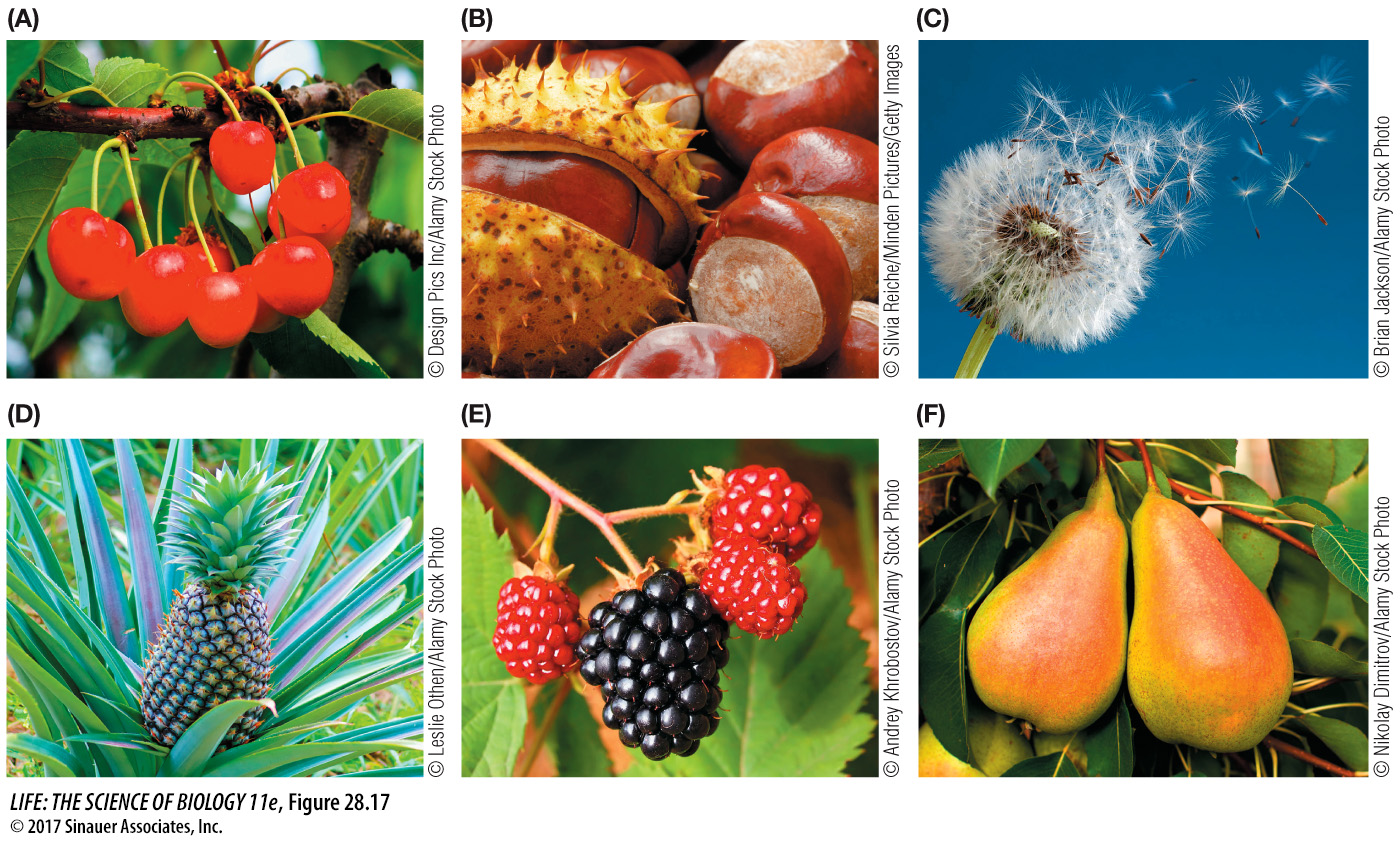Fruits aid angiosperm seed dispersal
Fruits often aid in seed dispersal. Fruits may attach to or be eaten by an animal. The animal is then likely to move, after which the seeds may fall off or be defecated. Fruits are not necessarily fleshy. Fruits can also be hard and woody, or small and have modified structures that allow the seeds to be dispersed by wind or water (Figure 28.17).

Question
Q: The large incisors of rodents help these animals penetrate the shells of woody nuts, which they consume as food. But unlike many animals that eat fruits without digesting the seeds, rodents destroy the seeds when they eat them. So how do rodents aid in dispersing the seeds of nut-
Although rodents destroy the seeds of nut-
A fruit may consist of only the mature ovary and its seeds, or it may include other parts of the flower or structures associated with it. A simple fruit is one that develops from a single carpel or several fused carpels, such as a plum or cherry. A raspberry is an example of an aggregate fruit—one that develops from several separate carpels of a single flower. Pineapples and figs are examples of multiple fruits, formed from a cluster of flowers (an inflorescence). Fruits derived from parts in addition to the carpel and seeds are called accessory fruits—examples are apples, pears, and strawberries.
Media Clip 28.3 Flower and Fruit Formation
www.life11e.com/